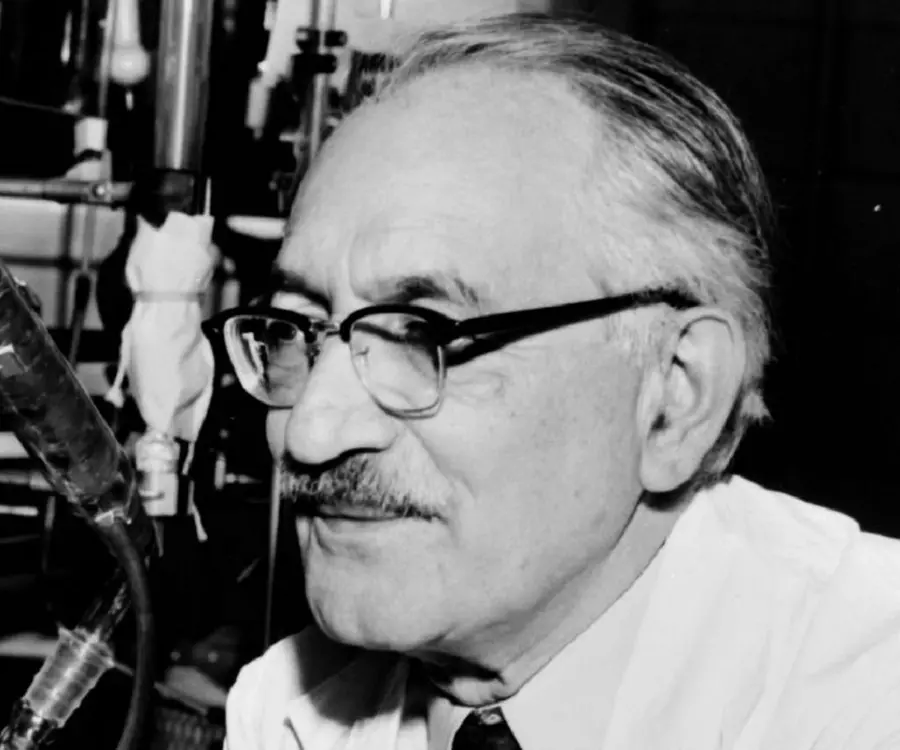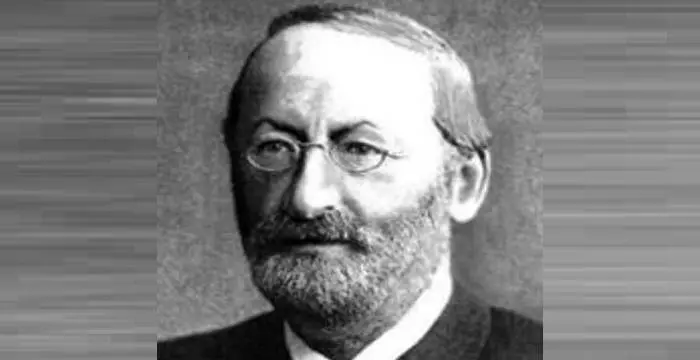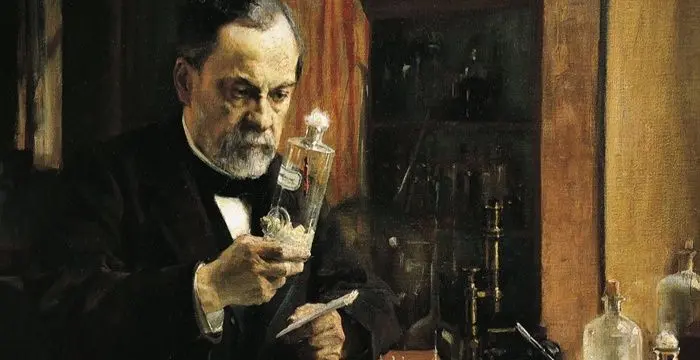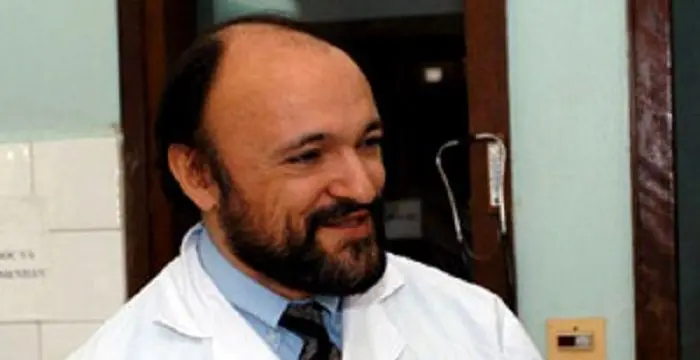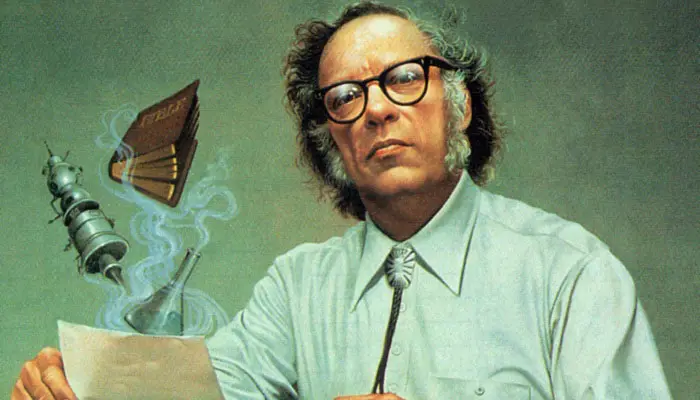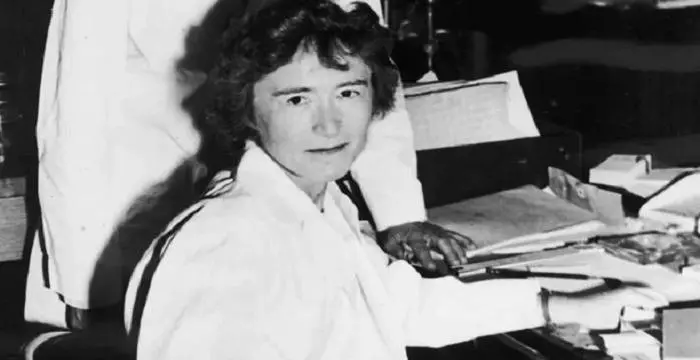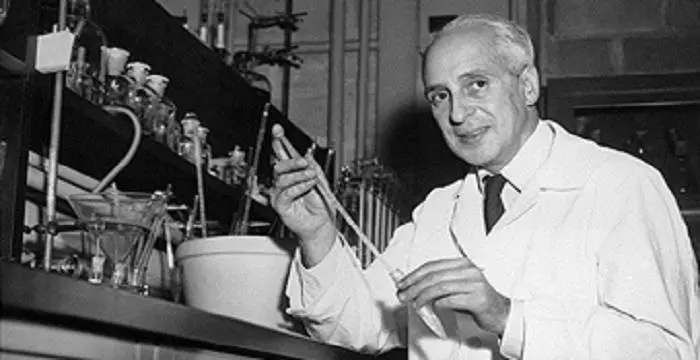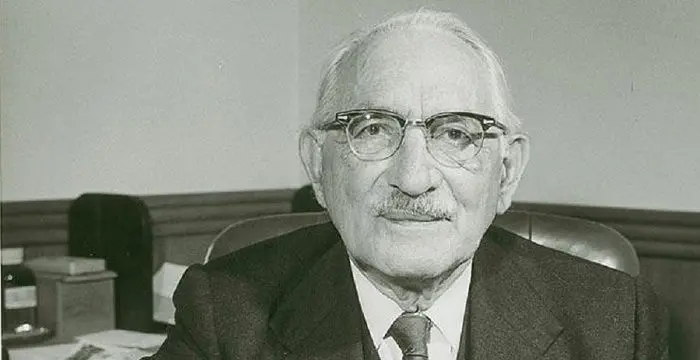
Selman Waksman - Discoverer of Streptomycin, Career and Childhood
Selman Waksman's Personal Details
Selman Waksman was a noted Russian-born American scientist who discovered the antibiotic streptomycin
| Information | Detail |
|---|---|
| Birthday | July 22, 1888 |
| Died on | August 16, 1973 |
| Nationality | Ukrainian |
| Famous | Scientists, Microbiologists, Biochemists, Discoverer of Streptomycin |
| Birth Place | Nova Pryluka, Ukraine |
| Gender | Male |
| Sun Sign | Cancer |
| Born in | Nova Pryluka, Ukraine |
| Famous as | Discoverer of Streptomycin |
| Died at Age | 85 |
Selman Waksman's photo
Who is Selman Waksman?
Selman Waksman was a prolific Russian-born American scientist who became famous for his discovery of antibiotics, mainly streptomycin that revolutionized the medical world for its effective treatment against tuberculosis. Waksman gave his life to the study of organic substances. An inventor, biochemist and microbiologist by profession, it was Waksman who initiated studies of the decomposition of organic residues in soils and composts to form humus. For four decades, Waksman researched in his laboratory the study of the nature, distribution, and properties of the microorganisms, and their effects on the structure and the physical and chemical properties of the soils they inhabit. Over the course of his career, he discovered over twenty antibiotics and introduced procedures that have led to the development of many others. For his vital contribution and discovery of antibiotic streptomycin as an antidote for tuberculosis, he was awarded the Nobel Prize in Physiology or Medicine. Interestingly, the royalties received from the sale of streptomycin and neomycin were used in the creation of Institute of Microbiology at Rutgers University, which was later renamed Waksman Institute of Microbiology. The institute runs till date and supports courses, lectureships, exchange programs and research in the field of microbiology.
// Famous Scientists
Juliane Koepcke
Juliane Koepcke is a German-Peruvian biologist, who was the lone survivor among the 92 passengers and crew of the ill-fated LANSA Flight 508 that crashed in the Peruvian rainforest on 24 December 1971. Know more about her life in this biography.
Henry Cavendish
Henry Cavendish was a theoretical chemist and physicist, renowned for discovery of hydrogen and calculation of the mass of earth. To know more about his childhood, profile, timeline and career read on
Konstantin Tsiolkovsky
Konstantin Tsiolkovsky was a Russian rocket scientist and a pioneer of astronautics. This biography provides detailed information about his childhood, family, personal life, career, achievements, etc.
Childhood & Early Life
Selman Waksman was born on July 22, 1888, in Nova Pryluka, Podolia Governorate, Russian Empire, to Jewish parents, Fradia and Jacob Waksman,
Young Waksman attained his early education from private tutors before enrolling in an evening school in Odessa. He became bar mitzvah at the age of thirteen. In 1910, he gained his matriculation degree from Fifth Gymnasium. Same year, the family shifted base to United States, after his mother’s death. In 1916, he became a naturalised American citizen.
In America, Waksman attended Rutgers College. He graduated from the same in 1915 with a Bachelor of Science degree in Agriculture. Continuing his studies at Rutgers, he received a Master’s degree in science the following year. While studying, Waksman trained under J.G Lipman at the New Jersey Agricultural Experiment Station, researching on soil bacteriology. It was Lipman who helped define Waksman future career as a microbiologist.
In 1915, Waksman made his first public presentation, with R. E. Curtis, ‘Bacteria, Actinomycetes, and Fungi of the Soil’ to the Society of American Bacteriologists at Urbana, Illinois.
Following his studies at Rutgers, Waksman was appointed as a research fellow at the University of California, Berkeley. In 1918, he gained his doctorate degree in biochemistry from the university along with his fellow researcher T. Brailsford Robertson.
For most of his college and graduate years, Waksman survived on scholarships and part-time odd jobs. From working as a Sunday caretaker to a night watchman, Waksman did it all. He also worked as a tutor of English and various scientific subjects, and later as the head of the biochemistry department at the Cutter Laboratories.
Career
Upon completing his doctorate degree, Waksman returned to his alma mater at Rutgers in 1918, where he was appointed as a lecturer on soil microbiology. Simultaneously, he joined Dr Lipman as a microbiologist at the latter’s Experiment Station.
It was while working as a university scientist at Rutgers that Waksman started on his pursuits with actinomycetes and with organisms involved in sulphur oxidation. His most important contribution during this phase was the isolation of Thiobacillus thiooxidans.
Along with his fellow researchers and colleagues, Waksman devised standardized methods of evaluating microbial populations in soil samples. He studied the decomposition of organic residues in soils and compost to form humus.
In 1924, Waksman made a family trip to Europe where he attended the International Conference of Soil Science in Rome. Next, he toured the microbiological and soil laboratories of the European countries. Returning to his homeland, he penned the book, ‘Soil Microbiology in 1924’ which became a precursor to his famous book, ‘Principles of Soil Microbiology’ which was published in 1927. In between, he published the book, ‘Enzymes’.
Post 1925, his scientific research became large and diverse as more and more graduate students and postdoctoral fellows joined his laboratory. He devoted himself more to the organizational aspects of science. During this phase, he published several works, namely, ‘The Soil and the Microbe’, ‘Humus’ and so on. He also became an adviser on the commercial development of composts.
In 1931, he developed a laboratory for the study of marine microbiology, where he along with his students worked each summer for twelve years. Together, they studied the fouling of ship bottoms, devising methods for protecting materials against tropical deterioration
In 1939, he started his pioneering research work on antibiotics. He undertook a systematic effort to identify soil organisms producing soluble substances that would be useful in the control of infectious disease.
In 1941, Waksman first coined the word ‘antibiotics’ to microbial products with antimicrobial properties. The startling discovery changed the panorama of the medical world globally as it effectively put an end to the threat of fatal bacterial infections.
A decade of extensive research and development led to the discovery of ten antibiotics, their isolation and characterization some of which include actinomycin, clavacin, streptothricin, streptomycin, grisein, neomycin, fradicin, candicidin, candidin, and others. Amongst them, three had important clinical application associated with them, actinomycin in 1940, streptomycin in 1944 and neomycin in 1949. Eighteen antibiotics were discovered later.
Post World War II, Waksman travelled extensively to the Soviet Union. His main purpose of the visits was to promote scientific exchange of information and establish methods of producing antibiotics.
Along with his scientific career, Waksman well balanced his academic career. He was appointed as an Associate Professor at Rutgers University in 1925, and was eventually promoted to Professor in 1930.
In 1940, he served as the Head of the Department of Microbiology. With the establishment of the Institute of Microbiology at the Rutgers University, he was appointed Director of the Institute of Microbiology. He retired from the post in 1958.
Major Works
Waksman discovered a total of twenty antibiotics through extensive research and development, of which actinomycin discovered in 1940, streptomycin in 1944 and neomycin in 1949 were the most prized invention. The discovery of streptomycin created a revolution in the medical world as it effectively put an end to the threat of tuberculosis. The discovery also gained him the most coveted award, Nobel Prize in Physiology or Medicine in 1952.
Awards & Achievements
In 1929, Waksman was bestowed with the Nitrate of Soda Nitrogen Research Award. This was the only prize won by him during his early years.
In 1952, he was awarded the Nobel Prize in Physiology or Medicine for his discovery of the antibiotic streptomycin, the first effective antibiotic against tuberculosis. Same year, he received Japan’s highest honour, Star of the Rising Sun by the then Emperor of Japan.
Personal Life & Legacy
Selman Waksman married his childhood sweetheart, Bertha Deborah Mitnik, on August 4, 1916. Following their marriage, the couple stayed at California and New York before finally settling at New Brunswick, New Jersey. Bertha frequently accompanied her husband on his scientific trips.
The couple was blessed with a daughter, Byron Halsted. Byron attended the University of Pennsylvania Medical School and later pursued an academic career as a research immunologist and teacher. She was involved in the multiple sclerosis research.
Waksman breathed his last on August 16, 1973. He was interred at the Crowell Cemetery in Woods Hole, Barnstable County, Massachusetts.
The Institute of Microbiology which was opened at the Rutgers’ University in 1951 wherein Waksman served as the first director has been reamed him. The institute is today known as Waksman Institute of Microbiology.
// Famous Microbiologists
Ferdinand Cohn
Ferdinand Cohn was a German biologist who is considered as the father of bacteriology and microbiology. Check out this biography to know about his childhood, life, achievements, works & timeline.
Louis Pasteur
Louis Pasteur was a French chemist and microbiologist who developed the first vaccines for rabies and anthrax. This biography of Louis Pasteur provides detailed information about his childhood, life, achievements, works & timeline.
Carlo Urbani
Italian epidemiologist Carlo Urbani was the first person who identified SARS as a highly contagious disease. Find out more about his life in this biography.
Selman Waksman's awards
| Year | Name | Award |
|---|---|---|
Other | ||
| 0 | 1952 - Nobel Prize in Physiology or Medicine | |
| 0 | 1948 - Albert Lasker Award for Basic Medical Research | |
| 0 | Leeuwenhoek Medal | |
Selman Waksman biography timelines
- // 22nd Jul 1888Selman Waksman was born on July 22, 1888, in Nova Pryluka, Podolia Governorate, Russian Empire, to Jewish parents, Fradia and Jacob Waksman,
- // 1910 To 1916Young Waksman attained his early education from private tutors before enrolling in an evening school in Odessa. He became bar mitzvah at the age of thirteen. In 1910, he gained his matriculation degree from Fifth Gymnasium. Same year, the family shifted base to United States, after his mother’s death. In 1916, he became a naturalised American citizen.
- // 1915In America, Waksman attended Rutgers College. He graduated from the same in 1915 with a Bachelor of Science degree in Agriculture. Continuing his studies at Rutgers, he received a Master’s degree in science the following year. While studying, Waksman trained under J.G Lipman at the New Jersey Agricultural Experiment Station, researching on soil bacteriology. It was Lipman who helped define Waksman future career as a microbiologist.
- // 1915In 1915, Waksman made his first public presentation, with R. E. Curtis, ‘Bacteria, Actinomycetes, and Fungi of the Soil’ to the Society of American Bacteriologists at Urbana, Illinois.
- // 4th Aug 1916Selman Waksman married his childhood sweetheart, Bertha Deborah Mitnik, on August 4, 1916. Following their marriage, the couple stayed at California and New York before finally settling at New Brunswick, New Jersey. Bertha frequently accompanied her husband on his scientific trips.
- // 1918Following his studies at Rutgers, Waksman was appointed as a research fellow at the University of California, Berkeley. In 1918, he gained his doctorate degree in biochemistry from the university along with his fellow researcher T. Brailsford Robertson.
- // 1918Upon completing his doctorate degree, Waksman returned to his alma mater at Rutgers in 1918, where he was appointed as a lecturer on soil microbiology. Simultaneously, he joined Dr Lipman as a microbiologist at the latter’s Experiment Station.
- // 1925Post 1925, his scientific research became large and diverse as more and more graduate students and postdoctoral fellows joined his laboratory. He devoted himself more to the organizational aspects of science. During this phase, he published several works, namely, ‘The Soil and the Microbe’, ‘Humus’ and so on. He also became an adviser on the commercial development of composts.
- // 1925 To 1930Along with his scientific career, Waksman well balanced his academic career. He was appointed as an Associate Professor at Rutgers University in 1925, and was eventually promoted to Professor in 1930.
- // 1929In 1929, Waksman was bestowed with the Nitrate of Soda Nitrogen Research Award. This was the only prize won by him during his early years.
- // 1931In 1931, he developed a laboratory for the study of marine microbiology, where he along with his students worked each summer for twelve years. Together, they studied the fouling of ship bottoms, devising methods for protecting materials against tropical deterioration
- // 1939In 1939, he started his pioneering research work on antibiotics. He undertook a systematic effort to identify soil organisms producing soluble substances that would be useful in the control of infectious disease.
- // 1940 To 1958In 1940, he served as the Head of the Department of Microbiology. With the establishment of the Institute of Microbiology at the Rutgers University, he was appointed Director of the Institute of Microbiology. He retired from the post in 1958.
- // 1941In 1941, Waksman first coined the word ‘antibiotics’ to microbial products with antimicrobial properties. The startling discovery changed the panorama of the medical world globally as it effectively put an end to the threat of fatal bacterial infections.
- // 1951The Institute of Microbiology which was opened at the Rutgers’ University in 1951 wherein Waksman served as the first director has been reamed him. The institute is today known as Waksman Institute of Microbiology.
- // 1952In 1952, he was awarded the Nobel Prize in Physiology or Medicine for his discovery of the antibiotic streptomycin, the first effective antibiotic against tuberculosis. Same year, he received Japan’s highest honour, Star of the Rising Sun by the then Emperor of Japan.
- // 16th Aug 1973Waksman breathed his last on August 16, 1973. He was interred at the Crowell Cemetery in Woods Hole, Barnstable County, Massachusetts.
// Famous Biochemists
Robert Huber
Robert Huber is a German biochemist and Nobel Laureate. Check out this biography to know about his childhood, life, achievements, works & timeline.
Charles Best
Charles Best was a great scientist and a renowned physiologist who is remembered for being the co-discoverer of insulin. Read this biography to learn about his profile, childhood, life and timeline.
Isaac Asimov
Isaac Asimov was an American professor of biochemistry and a renowned author of science fiction and popular science books. Read this biography to know more about his life.
Gerty Cori
Gerty Theresa Cori was a Nobel Prize winning biochemist who discovered the catalytic conversion of glycogen. To know more about her childhood, career, profile and timeline read on
Severo Ochoa
Severo Ochoa was a Spanish physician and biochemist who won the 1959 Nobel Prize in Physiology or Medicine. Check out this biography to know about his childhood, life, achievements, works & timeline.
Louis Pasteur
Louis Pasteur was a French chemist and microbiologist who developed the first vaccines for rabies and anthrax. This biography of Louis Pasteur provides detailed information about his childhood, life, achievements, works & timeline.
Selman Waksman's FAQ
What is Selman Waksman birthday?
Selman Waksman was born at 1888-07-22
When was Selman Waksman died?
Selman Waksman was died at 1973-08-16
Where was Selman Waksman died?
Selman Waksman was died in Woods Hole, Falmouth, Massachusetts, United States
Which age was Selman Waksman died?
Selman Waksman was died at age 85
Where is Selman Waksman's birth place?
Selman Waksman was born in Nova Pryluka, Ukraine
What is Selman Waksman nationalities?
Selman Waksman's nationalities is Ukrainian
What is Selman Waksman's sun sign?
Selman Waksman is Cancer
How famous is Selman Waksman?
Selman Waksman is famouse as Discoverer of Streptomycin

